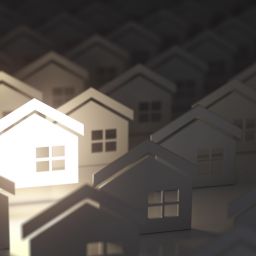
I. Neighborhood
- Several neighborhood factors positively impact the value of your home, most notably its walkability score which is the home’s proximity to schools, shopping, parks, and other urban amenities. In a recent study, homes in neighborhoods with a higher walkability score sold for close to 23% higher than those who were more car dependent.
- Living in a top rated school district will increase the value of your home
- Good parking availability, lower crime rate and good air quality/less pollution also increase value
- Having power lines too close to your property or living near gun ranges and train tracks tend to lower the home’s value as does living too close to registered sex offenders. Excess noise also tends to lower the value of the home. It is noted that while being close to transportation (like train stations) is a positive, too close can be a deterrent as the noise and congestion can turn potential homeowners away.
- Comps is short for real estate comparables. Comps help the homeowner determine the value of their own home by comparing it to properties sold in the same neighborhood or a nearby area with similar characteristics (i.e.; same square footage, number of bedrooms/bathrooms).
II. Energy Efficiency
- Energy efficient homes are becoming more desirable as homeowners see it as a way to save more money while having a positive impact on the environment. Examples of energy saving features include:
- Well insulated windows and doors
- Energy efficient appliances and lighting
- Weather-stripping to control moisture and decrease leakage issue
- Landscaping– well placed trees can keep the home naturally cooler
- Tankless water heaters (these only produce water as needed saving on water usage)
- Having a cool roof – light colored roofs reflect rather than absorb heat keeping the home naturally cooler
- Having solar panels – these panels can increase home value by about 4% according to one recent study
III. Home’s Age and Condition
- Age can negatively impact the value of the home.. Cosmetic issues like outdated rooms or problems with the roof or plumbing decrease the value of the home. It also costs more to insure an older home (especially if the home is more than 30 years old) due to the anticipation that maintenance issues are more imminent. Therefore newer homes are usually appraised at a higher price.
- Upgrades and renovations (particularly to kitchens and bathrooms) tend to increase the value of the home.
IV. Property Size | Square Foot & Yard Size
- Size is important as a bigger home will obviously increase the value. It’s important to note that livable space, as garages, attics and unfinished basements don’t count in usable square footage.
- The price per square foot (i.e.; total value divided by total square footage) depends on the factors discussed. The price per square foot is also an important real estate comp that should be factored in when determining home value.
V. State of the Housing Market
- While there are an array of things you can do to increase the value of your home (e.g., renovations, increase curb appeal) there are a host of other economic factors that you have less control over. These include the following:
- General Economy
- Demographics
- Demand & Supply Situation
- Cost of Building Materials and Labor
- Investors and Speculators in the Market
- Emerging Trends
Getting Ready To Move? If so, read our blog on Moving.










